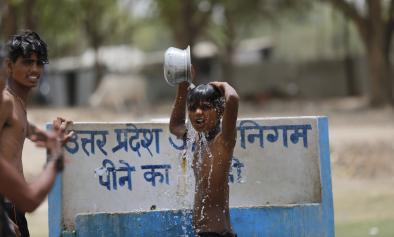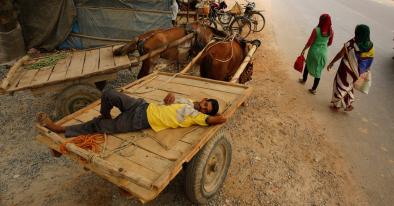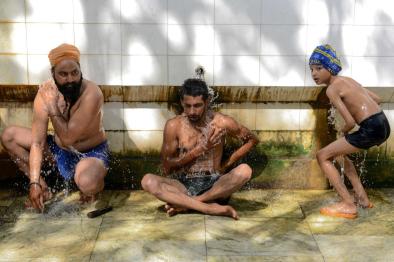Science Source
Early 21st century anthropogenic changes in extremely hot days as simulated by the C20C+ detection and attribution multi-model ensemble
- Examines the effect of the 20th and recent 21st century anthropogenic climate change on high temperature extremes
- Bases experiment upon two large ensemble simulations
- The “world that was” simulations are externally forced as realistically as possible
- The “world that might have been” is identical except that the influence of human forcing is removed but natural forcing agents and variations in ocean and sea ice are retained.
- Analyzes the annual maxima of the three day average of the daily maximum surface air temperature, finding that long period return values have been increased by human activities between 1 and 3 °C over most land areas
- Presents corresponding changes in the probability of achieving long period non-industrial return values in the industrialized world
- Finds that most regions experience increases in the frequency and intensity of extremely hot three day periods, but anthropogenic sulfate aerosol forcing changes locally can decrease these measures of heat waves in some models
- Concludes that the shift in the distribution of surface air temperature since the mid 20th century has been profound
- Temperatures that were rare prior to the 1980's now occur with regularity
Related Content
Headline

Jun 19, 2019 | Business Insider
Bihar's heatwave kills 90, as temperatures rise to 45.8 degrees
Headline

Jun 17, 2019 | The Guardian
India heatwave: rain brings respite for some but death toll rises
Headline

Jun 13, 2019 | The New York Times
India Heat Wave, Soaring Up to 123 Degrees, Has Killed at Least 36
Headline

Jun 5, 2019 | Washington Post
‘It is horrid’: India roasts under heat wave with temperatures above 120 degrees


